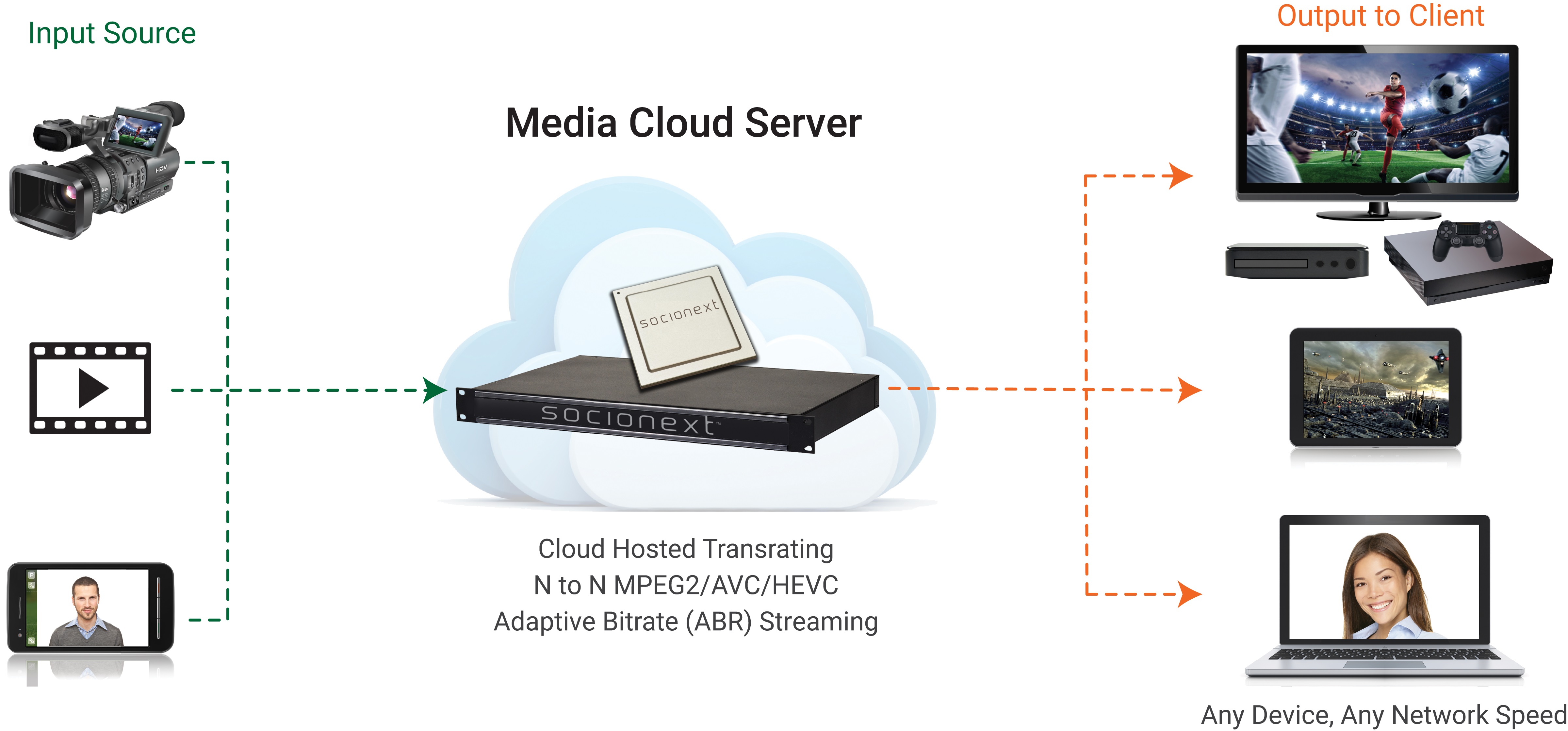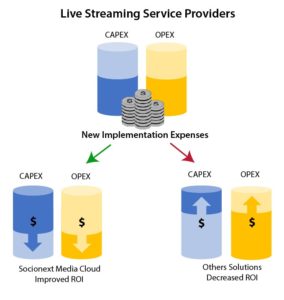Consumers expect streamed video content to match what they see on broadcast TV or in the movie theater. But the reality disappoints. Streamed video can suffer from increased latency and reduced resolution, while live streams are often choppy and drop frames.
Anyone familiar with the underlying technical challenges of delivering high-quality streamed – and especially live-streamed – video understands these performance hiccups. Consumers, however, are not sympathetic to the technical hurdles. They just want better quality video.
Enter the Socionext Media Cloud solution. The Media Cloud offers a cost-effective way for content providers to differentiate themselves from their competition by enhancing the viewing experience of streamed and live-streamed video. Most importantly, the Media Cloud balances the differing requirements of streamed and live-streamed video with the real-world ROI constraints of service providers.
The Challenges of Traditional Streaming vs. Live Streaming
There are significant differences between traditional streaming and live streaming.
Traditional streaming has the luxury of time to process content. Content holders can spend as much processing energy and time improving the video quality and reducing the file size as they want, thereby maximizing viewing experience with lower bit rate requirements. Multiple existing solutions using this processing method have been around for many years.
Live streaming is quite different. While both types must deal with input coming in multiple resolutions, frame rates, and sometimes codecs, live streaming content must be transcoded quickly to a multitude of output resolutions, frame rates, and codecs. Since the transcoding process happens in real-time, this inherently means that the video quality for live streaming cannot match that of traditional streams.
The real-time processing requirements of live-streaming thus force content providers to simplify the available resolutions and video formats while still trying to maintain compatibility with multiple devices. Such restrictions limit the audience’s overall viewing experience and reflect the unique role that the codec choice plays in the video quality during live streaming.
For example, a content holder might do one or more of the following to reduce the processing requirements and dropped frames of a live stream:
- Limit resolution and frame rate to 720p and 30 frames per second regardless of the original source.
- Require a specific group of pictures (GOP) structure which limits I-Frame (intra coded frame) and makes reproduction more difficult.
- Restrict codec support (e.g. using the older H.264/AVC instead of H.265/HEVC).
- Impose a bit rate limitation, such as 4Mbps.
All the above directly affect the overall viewing experience.
Live-Streaming and the Limits of Real-Time Transcoding
The high processing cost of real-time transcoding is what forces multiservice providers, over-the-top (OTT) providers, and content distribution networks to make the trade-offs listed above. Let’s examine why.
Transcoding, in its simplest form, tightly integrates a decoder with an encoder. But building a transcoding solution for live streaming is not simple. First there is the challenge of combining decoding and encoding in a system that economically delivers adequate video quality after generation loss (e.g. the difference when going from one lossy format to another). Then there is the challenge of not introducing added latency or delay. Add in the steep technical requirements of processing higher resolutions like 1080i/p and 4k, and it is easy to see why transcoding for live streams has been cost-prohibitive.
All the above mean that resolving the video quality disconnect between traditional and live streaming will not occur for years. The reason goes back to the same ROI dilemma discussed in our previous blog post. The cost of processing 4x or more pixels in real-time for live streaming is immensely expensive – significantly costlier than the off-line processing of traditional streams.
But video quality is not everything. Numerous studies show that typical users (e.g. non “golden eyes”) do not necessarily value minor video quality differences. They do value being able to watch content on their device of choice with the features and capabilities they want.
Which is why live stream content providers, instead of trying to match the video quality of traditional streams, can distinguish themselves from their competition by increasing viewing options. The market leaders that accept the difference between streaming and live streaming and adopt hardware accelerated systems will win consumer loyalty and force their competitors into weakened positions.
This is the design philosophy behind the Socionext Media Cloud solution.
Socionext Media Cloud: A Cost-Effective Live-Stream Transcoding Solution
The Socionext Media Cloud enables content providers to cost-effectively enhance the live-stream viewing experience by offering the ideal combination of video quality, features and ROI.
The Media Cloud is ideal for a range of streaming video applications. The device delivers a low-cost, compact, power-efficient, and easily deployable solution that addresses both the CAPEX (capital expense) and OPEX (operating expense) constraints of service providers.



